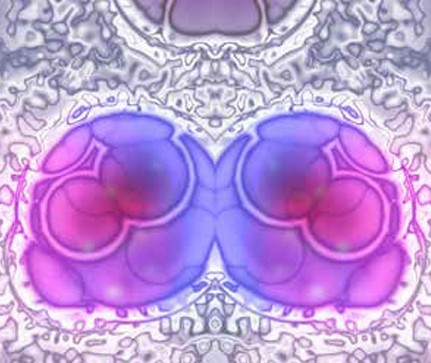Proofreading Enzyme May Improve Genetic Sequencing

By Christina Phillis
You can imagine how frustrating it would be to make hundreds of copies of an invitation only to realize that they had an error in them. Now imagine that those invitations are your RNA and the error is in genetic information, not the details of an event. There has been an error in the way RNA copies genetic information for 3 billion years, and scientists have just discovered a way to fix it.
The Error
The evolutionary ancestor of all viruses is the one to blame for the error. Certain retroviruses are able to use RNA to make copies of DNA in a process called reverse transcription. The process is prone to errors since the virus must use three replication systems to create double-stranded DNA from single-stranded RNA.
The HIV retrovirus uses the process of reverse transcription to insert its genome into host cells, where it is then replicated. However, transcription errors have created a variety of strains that complicate the treatment of the disease.
These errors proliferate not only inaccurate genetic information, but also incorrect research data. “Without the ability to faithfully read RNA, we cannot accurately determine the inner workings of cells. These errors can lead to misleading data in the research lab and potential misdiagnosis in the clinical lab,” said Jared Ellefson, postdoctoral fellow, Center for Systems and Synthetic Biology, University of Texas at Austin.
The Proofreader
Fixing this error required the ultimate proofreader: an enzyme that performs reverse transcription but can also check its work while copying genetic code. Engineered at UT Austin, this enzyme has enabled large amounts of RNA information to be copied with almost perfect accuracy for the first time.
Creating this new enzyme required in vitro directed evolution and protein engineering. The team of scientists trained a high-fidelity, or proofreading, DNA polymerase to use RNA templates. Dubbed RTX (reverse transcriptase xenopolymerase), the enzyme can copy RNA and maintain highly accurate and efficient proofreading all at the same time. RTX has improved accuracy at least threefold and has the potential to be 10 times as accurate. Additionally, this enzyme could enhance the way RNA is read from cells.
Genetic Diagnoses
Scientists believe that as we advance toward an age of personalized medicine, the accuracy of the sequence information will become more and more important. They believe that one day a readout of everyone’s transcripts would become something that can be obtained as easily as taking one’s pulse.
“The significance of this is that we can now also copy large amounts of RNA information found in modern genomes, in the form of the RNA transcripts that encode almost every aspect of our physiology. This means that diagnoses made based on genomic information are far more likely to be accurate,” said Andrew Ellington, professor, molecular biosciences, University of Texas at Austin.


